The main female hormones are estrogens, and to use this word in the singular is wrong. We can say that they make a woman, their attractiveness, height, weight, smoothness and youthfulness of the skin, splendor of hair, female figure, voice, mood and sexual activity depend on them. At the slightest deviation, the body reacts instantly, changing the appearance and internal state of the woman.
There are about 30 types of hormones, but the most important for the body are 3:
- E1 - estrone;
- E2 - estradiol;
- E3 - estriol.
If you imagine the ratio of estrogen levels in women, the hormones will be arranged in the following order: E1: E2: E3 = 1: 100: 7. The most active is estradiol.
Who is in charge?
The production of estrogen occurs in the follicles of the ovaries, and a small percentage of them are produced in the liver. The regulation of their synthesis occurs due to the hormone FSH in the pituitary gland, which stimulates follicles.
With the onset of menopause, the work of the ovaries stops, and in this case, fat tissue produces estrogen. But they are wrong, and there is no benefit from them.
There is no separate hormone estrogen. They have a generally general formula, but they affect the body in different ways. Bioactivity in them in the following proportion: 7: 100: 1. The main and most significant in the triad is estradiol. It is determined in blood tests. It is he who provides all the external attractiveness of a woman of reproductive age.
Estrogen receptors
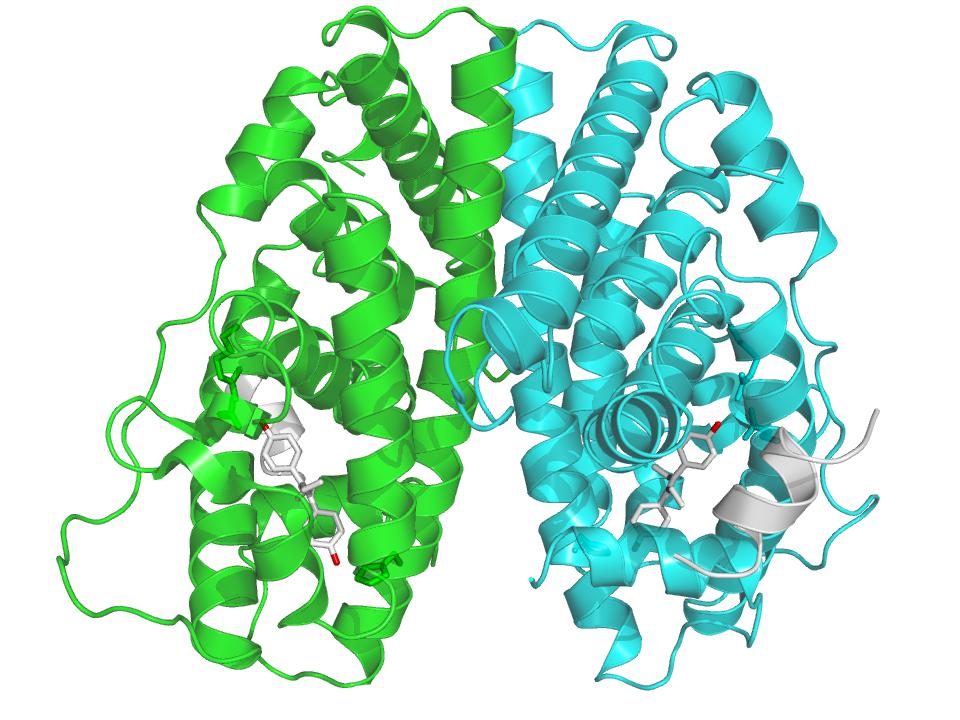
To read the hormonal information of the ovaries, nature created estrogen receptors. Thanks to their work, bodies perceive information and submit to it.
Receptors are present almost everywhere, because estrogens determine the functioning of the whole organism: in the brain, lungs, vascular system, myocytes, osteocytes, intestines and bladder, liver and myocardium, uterus and its appendages, vagina, mammary glands, in the dermis and even in the eyes . They vary in number in different systems, so the clinic of estrogen disorders is so diverse and complex.
E1 - "bad" estrogen
He dominates menopause. It can be synthesized by adipose tissue, even if the reproductive system is no longer fully functioning. In the ovaries, before menopause, the body uses it to create estradiol.
In menopause, this process is sharply reduced. In women with increased weight, it provokes the development of oncology of the chest and cervix at the age of 30 to 40 years.
Estradiol function
The main functions include:
- Active participation in the formation of a figure of a female type.
- Direct influence on the formation of secondary sexual characteristics.
- It affects the pigmentation processes of the genitals and areoles.
- Responsible for sex drive.
- Stimulates bone growth.
- Participates in the growth and maturation of follicles in the ovaries and ovulation.
- It promotes the growth of the uterus and the creation of a network of vessels here for the development of the fetus during pregnancy.
- Increases blood coagulation during menstruation and childbirth.
- Promotes the development of edema by delaying sodium in the body.
- Affects the mood of pregnant women.
Estriol (EZ)
This is the most inactive hormone, it is synthesized in minimal quantities. During pregnancy, it is produced by the placenta and fetal liver. Improves the blood supply to the genitals and helps in preparing the breast for lactation.
Estrogens and the female body

The level of hormones throughout life is constantly fluctuating.
Estrogen level:
- regulates the entire sexual function completely;
- provides normal course of MC;
- it always increases during puberty, during pregnancy (outside these periods it is in balance with another female hormone - progesterone);
- provides the development of secondary sexual characteristics;
- protects blood vessels from atherosclerosis;
- regulates the state of blood vessels, adjusts the operation of all cells in the desired mode;
- regulates metabolism, preventing obesity from developing;
- affects bones and subcutaneous tissue;
- prevents increased activity of the sebaceous glands.
Under the influence of some adverse moments, it begins to be produced not only in the ovaries, but also in the liver, skin cells, muscles, adrenal glands and even in the brain. Doctors call estrogen dominance such a high level of estrogen in women with a predominance over progesterone.
What are the reasons for the increase?
After 35 years, increased estrogen occurs in every second woman. There are 3 main factors causing this dominance:
- Hyperactivity of estrogen receptors - this can occur when they are irritated by some estrogen-like substances. These include phytoestrogens and xenoestrogens.
- Excessive production of these hormones within the body.
- Low levels of progesterone in the body.
Etiology of increased estrogen production
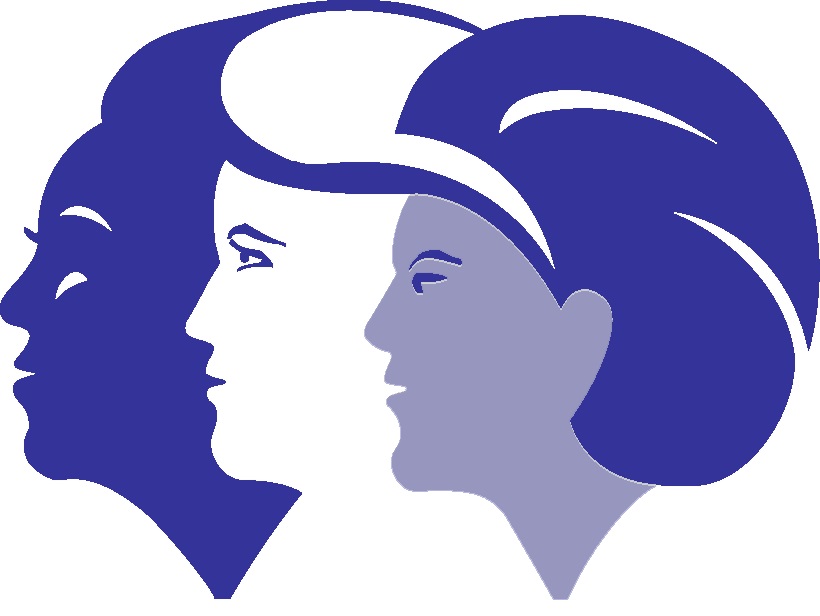
Excess estrogen is not a rare occurrence. It can also increase due to its excessive flow from outside. This occurs with improper nutrition, intake of endocrine disruptors, the use of products with GMOs, a high content of pesticides, products with phytoestrogens.
Among the reasons for increasing estrogen are:
- early puberty (at the age of about 7 years);
- reception OK;
- prolonged stress;
- smoking and alcohol;
- deficiency of vitamins and minerals;
- hypo- and hyperdynamia;
- hypertension
- endocrinopathies and obesity.
Diseases in which estrogen rises
The main pathologies leading to the growth of estrogens include the following:
- pituitary adenoma;
- ovarian tumors;
- hormone-dependent tumors (mastopathy);
- adrenal disease;
- chronic inflammation of the genital area.
Other reasons for the increase
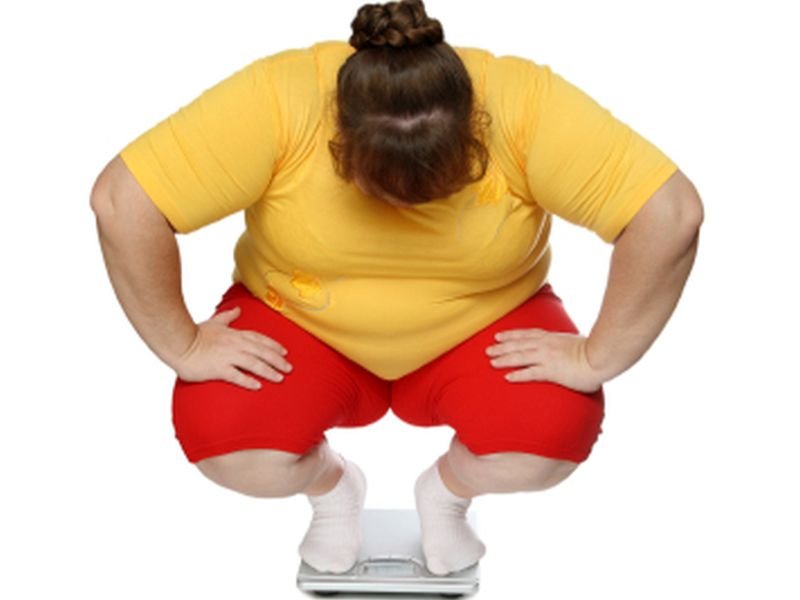
In some cases, the causes and symptoms of estrogen excess in women are caused by a combination of several factors. Weight gain even in 5-7 kg increases the level of estrogen due to the conversion of androgens into them. This occurs by aromatization, this process is necessary only in menopause, when the body thus tries to maintain the estrogen content in the body.
This transformation creates a vicious circle in the lady's body: weight gain leads to an increase in androgens, which subsequently increases the amount of estrogen. The latter, in turn, leads to weight gain, etc.
It is not easy to achieve weight loss in such cases, because excess estrogen affects other hormones, such as leptin and thyroxine, which cause sustained weight gain.
Also important is the effect of xenoestrogens. These are chemicals that are found in foods, cosmetics, household chemicals. They mimic estrogen and interact with estrogen receptors.
When inhaled, harmful fumes increase the level of the hormone in the blood. From these toxins, weight gain also comes.
Hypothyroidism can affect estrogen levels. Thyroid hormones help maintain the balance of progesterone and estrogen. With hypothyroidism, progesterone decreases, and estrogen begins to grow.
It is clear that the causes of increased estrogen in women and the symptoms of the disease are closely related.
The manifestation of increased estrogen
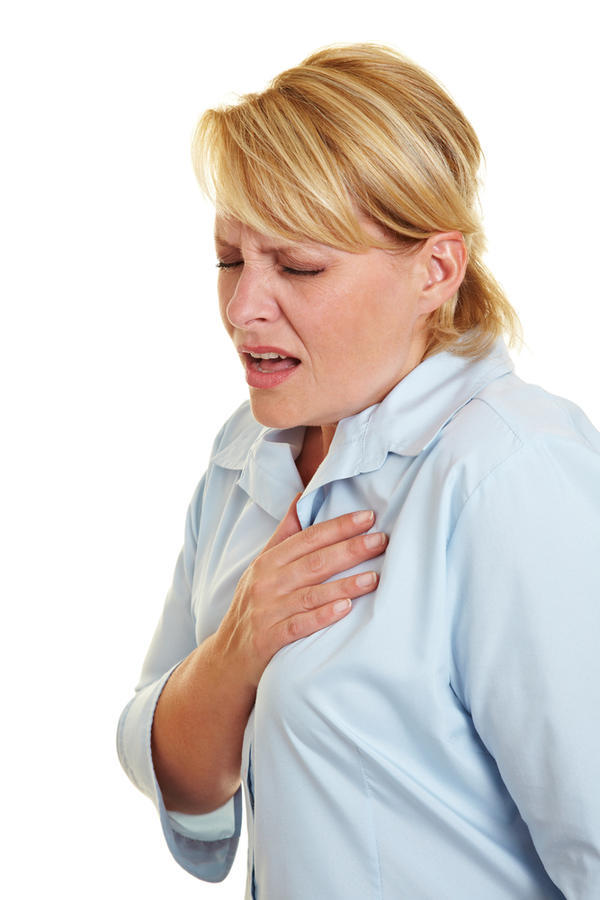
Symptoms of increase are expressed in the following:
- Sudden uncontrolled weight gain. It occurs even with the most balanced diet or diet, physical activity. This is one of the main signs of increased estrogen in women. Such a woman can lose weight only with the alignment of the hormonal background.
- Violation of the MC. In 80% of cases, hormonal failure, or rather, signs of an increased level of estrogen in a woman, becomes the fault. That is why, if the regularity of the cycle is violated, menstruation has become too plentiful, be sure to check hormones.
- Hypersensitivity of the mammary glands, their swelling. These are also signs of increased estrogen in women. If the chest became round without objective reasons, estrogen dominance can be suspected.
- Pain in the mammary glands. If it is noted against a background of low levels of progesterone in women, this is a clear sign of increased estrogen. The condition is very negative for the mammary glands, because they not only suddenly increase, the pain occurs at rest (on the sides of the chest and on top) or can be acute at the slightest touch to the chest. These are symptoms of excess female hormones.
- Increased emotionality. Often during menstruation, a woman becomes too nervous, tearful and irritable. These are symptoms of excess female estrogen hormones. A similar state becomes constant when the hormone dominates.
- Frequent headaches. Despite hundreds of causes of a headache, if they become permanent, these are signs of increased estrogen in a woman. It is likely that with this, progesterone will be low.
- Profuse hair loss. This is one of the signs and symptoms of elevated estrogen levels in women. Although it is believed that baldness is 2 times more threatening men, but, the girl also risks losing the splendor of her hair in the prime of life. Of course, she will not be bald, but her hair will become rare.
- Impaired memory is another sign of hormonal imbalance. A woman begins to forget important dates, keys, a handbag, etc. It is possible that all this is the effect of excess estrogen in women.
- Insomnia. It is associated with the fact that increased estrogen blocks the production of melatonin (sleep hormone). And if progesterone (a hormone of calm) is still lowered, you will definitely not sleep at night.
- Among the signs of increased estrogen in women is the emerging manner of not stopping in conversation, work, playing sports, etc. For a woman, this simply does not work out.
- Depletion of the body - a constant lack of sleep leads to the depletion and accumulation of all the problems associated with this.
Possible consequences
Increased hormone levels always mean danger. An excess of estrogen in women can cause malfunctioning of the thyroid gland, which will lead to overweight and osteoporosis.
Prolonged estrogen dominance causes:
- increase in blood pressure;
- breast cancer
- endometriosis;
- uterine tumors;
- increased blood clotting and blood clots;
- leg cramps;
- infertility;
- violations of the MC;
- disorders of the central nervous system and psyche.
Treatment principles
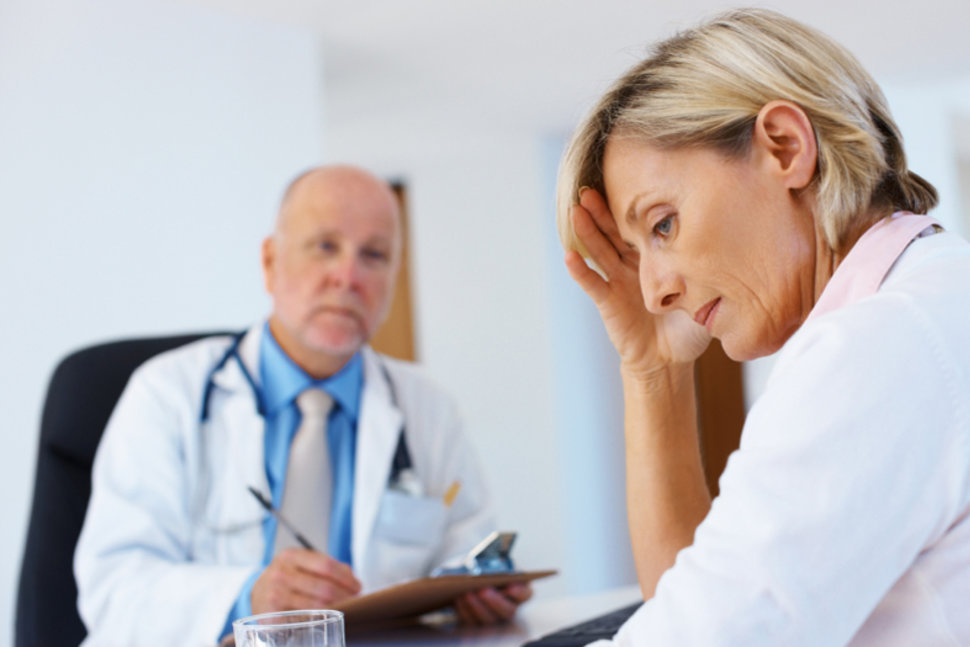
For successful treatment, the cause of the imbalance should be established. If the aromatization process is increased, zinc preparations, selenium, aromatase inhibitors, and vitamin C are prescribed.
For treatment, Arimidex, Aromazin, Fazlodeks, Tamoxifen, Klomifen, Femara, Mastodinon and other plant-based drugs are taken, all of them reduce estrogen.
Zoladex, Lupron, Goserelin, etc. also reduce estradiol in blood. Some women are afraid to take hormones, but their competent selection will not give side effects. But the rejection of HRT will lead to complications.
In special cases, surgery is necessary: removal of the ovaries or their irradiation in the event that the woman has menopause.
Diet change
Proper diet is the first step to recovery. The use of organic (natural) products is recommended: more cruciferous (various types of cabbage, radish, radish); up to 30 g of fiber daily. Fiber-rich foods (fruits, vegetables, legumes, seeds, whole grains) remove excess fat and cholesterol and lower estrogen.
Dietary supplements
Some of them can increase metabolism or reduce symptoms of increased estrogen. Such compounds include DIM, poppy root, zinc, calcium-D-glucarate and ashwagandha.
Exercise stress
Strength loads are especially good for estrogen. They lower testosterone and estrogen.
Stress management
The elimination of emotional experiences is important for the normalization of both estrogen and progesterone. Stressful situations contribute to the production of sex hormones and cortisol, which increases estrogen.
Xenoestrogens
Synthetic hormones should be avoided. Oral contraceptives should also be discarded. This is necessary because synthetic drugs are non-identical and disrupt the normal metabolism of hormones, can block or slow down their synthesis in the body.
Prevention, or How to restore estrogen levels to normal

Prevention measures are as follows:
- Limit alcohol consumption - it disrupts the liver, and the entire metabolism of estrogen occurs here.
- Eat organic foods.
- Eat more fiber.
- Eat foods with probiotics - these include fermented milk products and kvass, sauerkraut, pickles, kimchi and tofu cheese. Probiotic supplements can also be taken.
- Follow a balanced diet with enough vitamins (B 6 , C, E, D, etc.) and minerals (zinc, selenium and magnesium). A lot of vitamin B 6 is found in beef liver, sea fish, nuts and beans; zinc - in pork and lamb, buckwheat and oatmeal, and magnesium - in almonds, seaweed, peas and barley groats.
- Take rosemary essential oil - this is a powerful antioxidant that normalizes estrogen levels, immunity and thyroid. Struggles with signs of increased estradiol.
- Avoid exposure to xenoestrogens by limiting contact with them.
- Control stress. It suppresses progesterone and increases estrogen.
An increase in estrogen can talk about various diseases, the correct diagnosis will help to identify them. You should not delay the treatment, because the more neglected the pathology, the more difficult it is to treat.